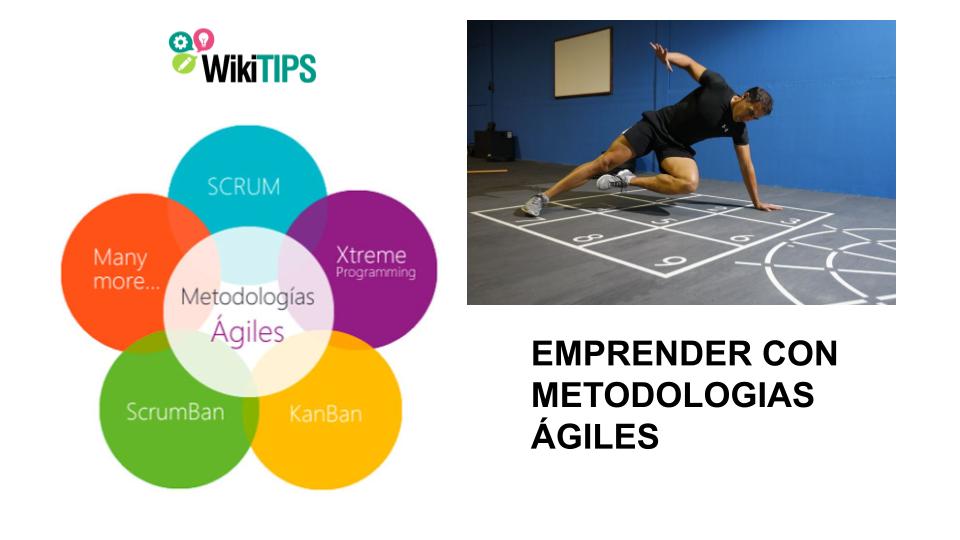
Accelerate your business with these expert tips on "Agile methodologies for building businesses". Analyse and discover this TIP!
Entrepreneurship with agile methodologies
Agile methodologies allow start-ups to be more flexible and respond quickly to market changes. You will start by learning what agile methodologies are and what their main characteristics are, such as constant iteration, focus on value delivery and team collaboration. It then describes the agile entrepreneurship process, which consists of several stages, such as problem identification, hypothesis validation, prototyping and product launch. At each stage, different tools and techniques are used, such as the empathy map, the Lean Canvas and the design sprint. In this TIP you will learn about the importance of working collaboratively and learning from mistakes, and conclude that agile methodologies are ideal for entrepreneurs looking to innovate and create value quickly and efficiently.
This Tip aims to The aim is to answer a number of questions: what agile methodologies are, what types of agile methodologies exist, what advantages they offer, what lessons can be learned from experience in using agile methodologies and what examples can illustrate the use of agile methodologies. Agile methodologies are tools that allow the way of working to be adapted to the conditions of the project, achieving flexibility and speed in the response to improve, change or reinvent a project and adapt it to the client's expectations, reducing costs and increasing productivity.
The Agile Manifesto:
The Agile manifesto was born in 2001 at a meeting of software developers. This manifesto established the methodological guidelines for developing IT projects. However, the transcendence of its content was soon demonstrated and it became a way of working used in all sectors and especially in the world of entrepreneurship.
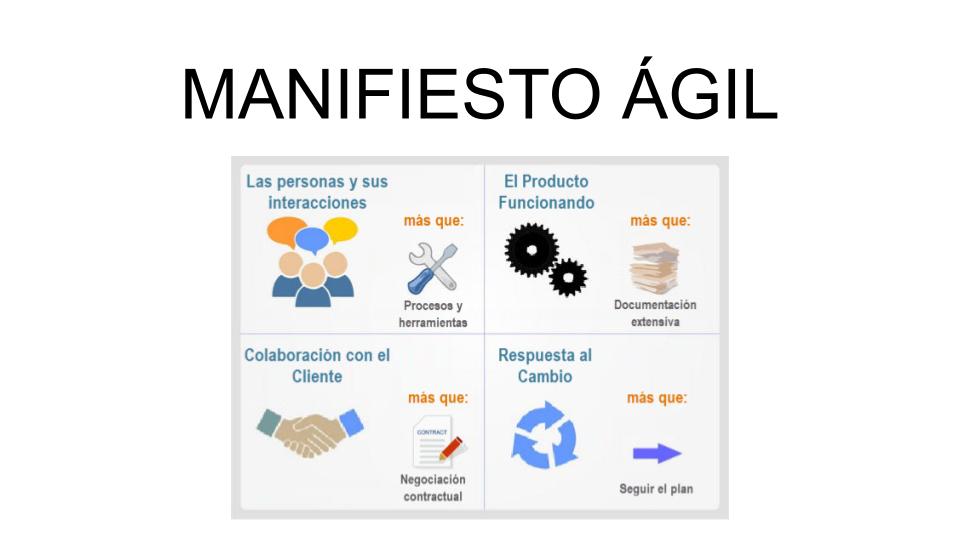
The manifesto was based on four fundamental pillars:
- The individual is more important than processes or tools.
- Give more value to the product in operation than to the documentation. Only what is really important will be documented.
- The client is a key partner in the project. The important thing is not the contract but the partnership with the client.
- Responding to change. The plan needs to be adaptable and flexible to changes as they occur.
What are the benefits of agile methodologies?
AMONG THE MOST SALIENT BENEFITS OF AGILE METHODOLOGIES ARE THE FOLLOWING:
- Immediacy. The client is able to visualise results right from the start, without having to wait until the end of the project.
- Access. The client can control and access the process in order to influence it and be able to make changes to suit the circumstances of the moment.
- Motivation. They are highly motivating and team-building methods.
- Analytical skills. The fact that the methodologies are practical and unbureaucratised makes it much easier to control the process by accessing points of improvement in order to achieve the customer's expectations.
SOME OF THE MOST COMMONLY USED AGILE METHODS:
- Scrum. Known as the chaos methodology, it states that all processes are chaotic in themselves. The Scrum strategy seeks to manage chaos through frequent meetings in order to ensure the achievement of established objectives.
- Kanban consists of a table composed of three columns of tasks: pending, in progress and completed. It is a table shared by the entire management team in order to avoid overlapping and repetition of tasks.
- Business Model Innovation raises the business model (+) with 4 questions to answer: Who, customer segment; What, value proposition; How, how the value proposition is generated/built/developed; Value, revenue model.
- Design Thinking: Although it is not strictly an agile tool, its proven effectiveness has led it to be considered as one of the family. Moreover, many of its criteria have been incorporated into other tools already mentioned.
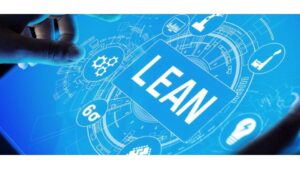
- Lean: une of the most important elements of this methodology is to reduce product delivery times, improve quality and reduce price. The Lean method focuses on what is essential, what is essential. Unnecessary things that do not make a profit are eliminated. Processes are optimised, the necessary information is provided to the team and interruptions are limited.
Optimise globally and with the long term in mind.
- Optimum quality. Quality in development must be a prerequisite. The aim is to correct any flaws that may appear at some point in time.
- Constant learning. From start to finish, it is a constant learning process. The most important thing is to accept any changes to the original plan to be undertaken.
- React quickly. Rapid and quality implementation is a differentiating element in the face of any competition.
- Constant improvement. With the focus on people and product construction processes without focusing on product improvement alone.
- The working team. Motivate and support the team by making them feel important.
The following advice is based on the experience of entrepreneurs and mentors who have supported entrepreneurs using agile methods.
Lessons and criteria for the use of agile methodologies:
What lessons can we learn from the use of agile methods and how do these lessons influence the criteria that we should apply in order to create companies or develop new products or services.
COLLABORATION:
Entrepreneurs must learn to collaborate, since, agile methods are based on in fact in collaborative work and self-organised workwhich means that there is no need for someone to be the boss; not even to lead the team. We are talking about a paradigm shift that empowers the team. Everyone is a boss and everyone is a manager. And everyone shares responsibility.
LET'S TAKE A LOOK AT THE LEARNINGS FROM THE COLLABORATIVE SPIRIT IN AGILE METHODS:
- Let us have a common vision: the vision brings the team together and sets the path to reach the final destination. The vision it is necessary to and share it. There is no need to pivoting involves a change of vision has to be seen as a change of strategy. A change of mind if it is a change of vision. Pivot is adopt another strategy within the same vision.
- Let's have a focus: sIt is important not to take on new tasks until the previous one has been completed. Multitasking should be avoided and, as with vision, the focus should be shared as in a rugby melee.
- When building your product or creating your business with agile methods keep the focus, one thing at a time, always on important and prioritised aspects.
- Let us have confidence in the team: it is necessary to take on that people does the best he knows how and to the best of his ability. The trust is the agile methods and their common vision and focus.
- It is very difficult to build it and very easy to lose it! That is why it must be built into the team from start to finish and, when new people join the team, they must do so in the same context. Its ingredients are commitment, equal communication for all and transparency.
- Learning to ask for help: et is essential that each team member knows what he or she knows and what he or she does not know. They should know how far they can go and at what point they should turn to others for help. Being able to ask for help is an additional skill required in the use of agile methods and involves being able to explain to others what you really need.
- It is not mandatory that the help you need comes from other members of the team. It can also come from outside. When you are in the process of developing a new business, it is good to have a mentor, not as someone who gives you closed solutions, but someone who helps you question things and induces you to reflect.
- Learning to be a team player: un team consists of people with different disciplines and different points of view. It is essential to give it cohesion and, for this, it is necessary to share emotional moments that unite. But these moments are not necessarily linked to the team and its objectives. They can also be moments outside of work, and these moments must be shared. And these moments can occur both inside and outside the business. A team is more than just work, so we need to know how we treat the people in the team. Cohesion, how they overcome obstacles.
THE DELIVERY
- What do we deliver and to whom? People want solutions to their problems or their needs. They only see sense in products and services if they provide them with solutions in some sense. That is why products and services are repositories of value.
- People buy drills only because they make holes. Moreover, few people are likely to be able to justify the unit cost of every single hole they drill in their house.
- Value is a subjective perception and there are different categories of value.
- Functional values: are faster, or cheaper.
- Social and emotional values: They make me feel good, they take away my fear, I feel represented, I identify with those causes.
- You need to know why they are buying your product. And deliver the value they ask for.
- Learning to prioritise: it is a fundamental complement to focus!!!. If I decide to focus on doing important things one after the other, I will have to prioritise.
- There are many prioritisation techniques that are given by the agile methods themselves:
- Critical or uncertain priority.
- Impact and novelty.
- In pairs or ranges.
- Prioritising also means saying no to many things.
- There are many prioritisation techniques that are given by the agile methods themselves:
- Learning to design through experimentation: agile methods promote empiricism or, in other words, they induce the application of the scientific method with its more than three hundred years of history. Experimentation must be assumed as a mindset when doing things. Create, prototype, test, iterate and re-create is the circle in which experimentation in the field of agile methods moves. Experimenting means finding where the value lies for the customer and that is what the entrepreneur should be concerned with rather than thinking about a complete or perfect product.
- The greatest enemies in the development of a new business, a new product or service are not the competition or the collectors.. The great adversaries are unconscious incompetence, things you don't know that you don't know, and many of them can be very important and have a great influence on your development.
- The second front is the things you think you know but end up discovering are not true. You see a reality that doesn't exist, which is very hard because it forces you to revise your views. One of the skills of agile methods is the acceptance of error.
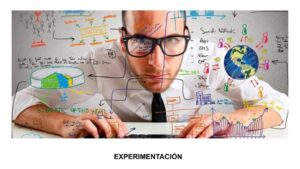
Experimentation is the great lever for learning in the field and as we go along. IBM's experimental development is about advancing the development of new products in contact with the customer.
4. Build things iteratively and incrementally: you don't have to develop complete products from the outset. Agile methods encourage you to work in short steps, developing small functionalities and allowing the customer to use them, and the customer himself will show you the way with the experience of use.
Another paradigm shift. In the past, modifications were made according to plan. Plans failed due to undetected or unknown causes. With agile methods, changes to the products cause changes to the plan. Any new iterative discovery incrementally modifies the product. Spotify is a clear example of a product developed iteratively and incrementally. In every sprint They modify the product by introducing improvements that arise from the way in which users use the product. They remove functions you don't use and replace them with new ones. That's what they call it continuous deployment and gives you a high competitiveness, as it allows you to adapt to any context. Spotify is not a product complete, but iterative and incremental.
REFLECTION
There must be time and space for reflection. Agile methodologies ensure that reflection takes place through events or even rituals or ceremonies.
- What we are building: First of all, we must ask ourselves what we are building, how it generates value, what elements make it up, these are questions that we must always think about because they will not allow us to define the product very clearly. They are questions to be asked at each delivery and answered by the team. We must not go about like a headless chicken, but reflect on every step we take.
- How I do it: the answer is provided by the various stages that make up the Design Thinking (empathy, definition, ideation, prototyping and testing). Each of these needs to be reflected upon.
- Build in small steps: steps that in turn respond to small objectives. The vision can be very ambitious but We will only get there step by step, metre by metre. No one gets to the top of a mountain by looking at the top. The agile methodologies promote to do early and gradual deliveries of the product, covering periodic targets.
- How do I learn to change and adapt it? lhe key is pivot. Neither the strongest, nor the fastest, nor the smartest will survive. It is the one who adapts best that survives.
- Improve the way you work: review how you do things and improve the way you work. Your objectives must be productivity and order.
EXAMPLES OF THE USE OF AGILE METHODOLOGIES:
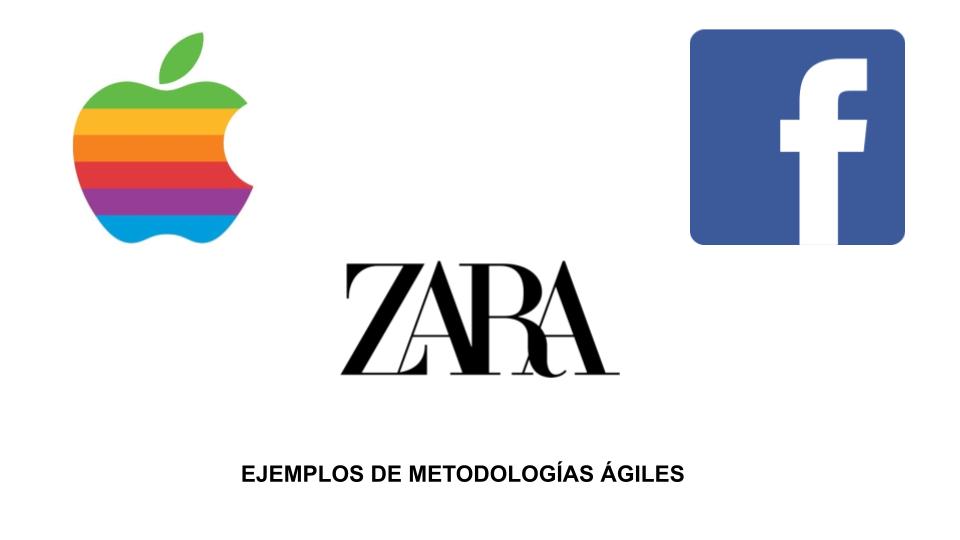
ZARA
Harvard Business Review in an article published in 2004 described Inditex's logistics strategy as madness. A madness that at the time allowed the company to design, produce and stock all its shops in less than 15 days. The key lies in Zara's use of its resources, which is four times higher than most brands. The explanation lies in an agile process called "PostponementLet's see what it's all about!!! The sales of products that Zara sells are very difficult to forecast; in addition, they have a very short life cycle. The efficiency of the logistics system allows them to postpone procurement of shops until the last moment and to do so on the basis of downward forecasts, knowing that in 15 days they can rectify any stock problems that may arise. The head office in Arteixo, Galicia receives daily information from all Zara shops around the world about their sales and knows what they have sold the most and the least. They can supply any shop anywhere in the world within 48 hours. having gone through the whole process of order processing, production and quality control.
APPLE
It is organised on a project basis. One person is in charge of the iPhone operating system, one person is in charge of Mac hardware, one person is in charge of iPhone hardware engineering, one person is in charge of worldwide marketing, one person is in charge of operations, and so on. They all meet for 3 hours once a week and talk about what they are doing and how they are doing it. This meeting contributes to fostering team spirit. Each manager knows what the others are doing and takes it into consideration for his or her project. This work then filters down to the rest of the company's teams. The operation of the method depends on the trust placed in managers and employees that they are going to do their job on time, with quality and without supervision. Another key to success lies in the distribution of focuses and objectives within the product as a whole. They all work on the same product but each one deals with one life cycle of the product without losing sight of the big picture thanks to communication and the prevailing collaborative spirit.
FACEBOOK (+)
On Facebook, when a new project is set up, a team of 6 or 7 people is assembled to carry it out. The team is made up of people with the specific skills needed to do the project. They come from different departments, with different backgrounds, etc. The method does not provide for regular meetings, mails or chats. What they do is bringing the whole team together in one room, y work there until the project is completed. They can also meet once or twice a week to devote the whole day to the project. This room is equipped with all the necessary resources and each person works on their part of the project according to their expertise. Being together allows them to talk and communicate directly, keep abreast of changes in real time and always be aware of the work of other colleagues. It's a system of chain work that works!!!!
OTHER ARTICLES THAT MAY BE OF INTEREST:
APPLY THIS TIP TO YOUR PROJECT
TASK
Now that you have learned all about this TIP, you should be able to answer these questions:
- Reflect on how you could use agile methodologies in your project, both at the level of business development and product and service design.
- Could you cite instances where experience or a particular learning experience forced you to revise your strategy?
- How you would make your project iterative and incremental. Remember the Spotify case
We encourage you to do the exercise of answering them!
QUIZZES
- 💻 PRACTICE with an expert in the next practical webinar.
- 🔎 CONSULT more related TIPs with this same theme.
- 📖 AMPLIA your knowledge by downloading this EBOOK y this EBOOK.
THINK ABOUT YOU
- 🚀 IMPULSA your company in the next acceleration programme, ¡book your place now!.
- 🥁 PRACTICE with your project in this practical webinar, ¡apply for your place!.
- 🌐 CONTACT with other entrepreneurs and companies, ¡register and take part in the next Networking!
THINK ABOUT HELPING OTHERS
- 🤝COLLABORATE as a volunteer: expert, mentor, inverter, awarding, Spreading the word, challenging, innovating, creating a TIP...
- 💬 RECOMMENDS this programme to reach out to more entrepreneurs by Google.
- 👉 SHARE your learning!
- 📲 SEND this TIP 👇
Rate this TIP!
Click on the stars to rate
Rating "2" - Average " - Average5"
No votes yet, be the first to vote!
We are sorry you did not find it useful.
Help us improve this TIP!
Leave us a comment and tell us how you would improve this TIP










Interesting and didactic, as it provides knowledge of how different agile methodologies can be applied depending on the activity of the company and its size. It also encourages reflection on how to apply them to the project.